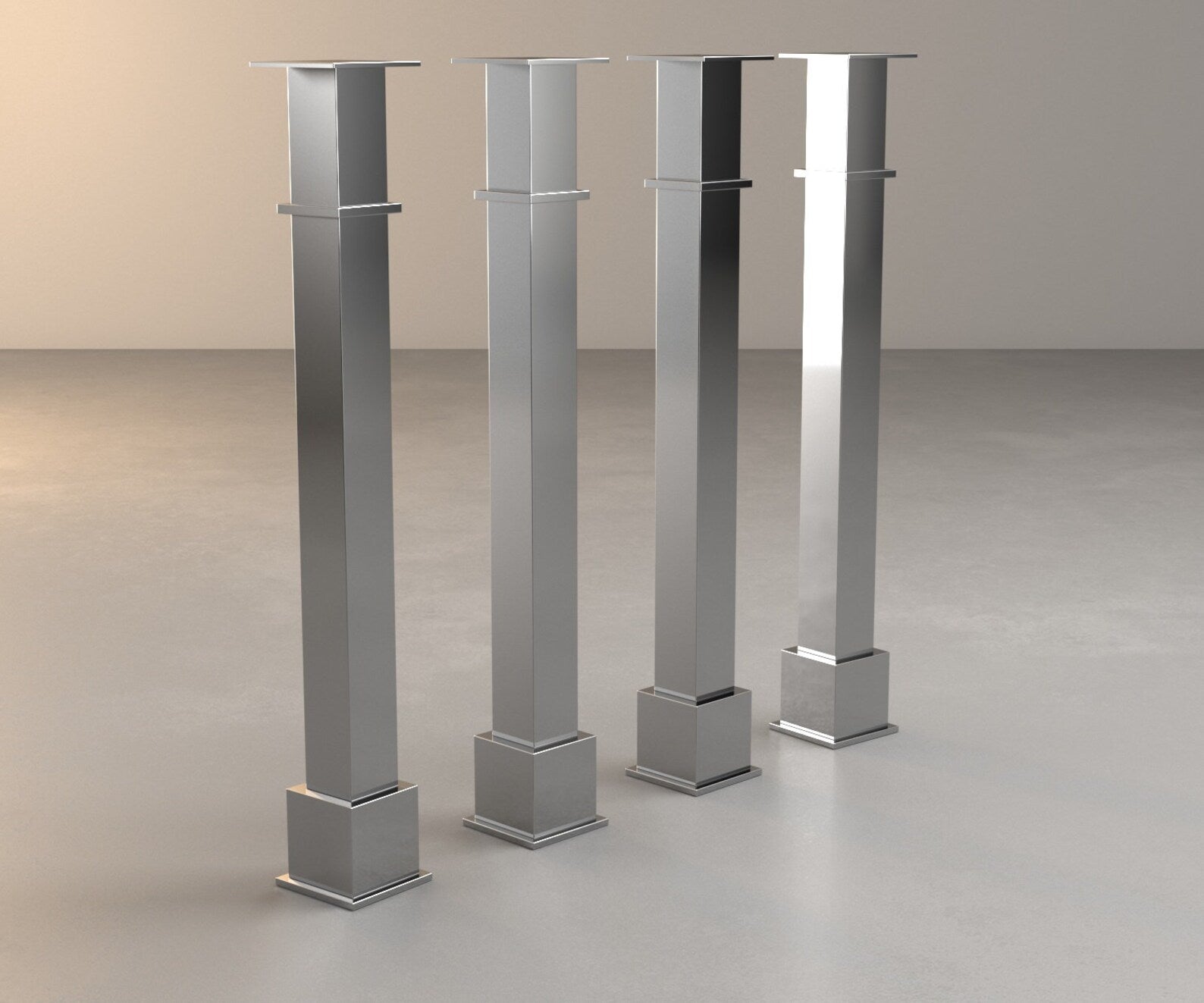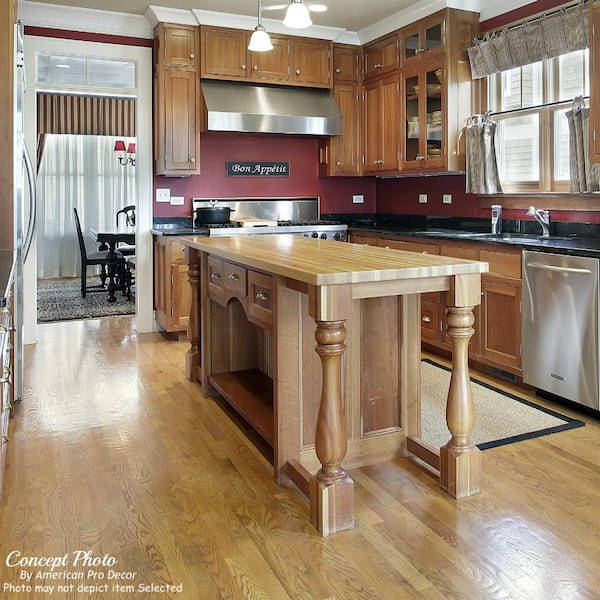A Comprehensive Guide to Selecting the Right Kitchen Island Leg
A Comprehensive Guide to Selecting the Right Kitchen Island Leg
Blog Article
Checking Out the Important Attributes of a Kitchen Area Island Leg for Your Culinary Area
The cooking area island offers as a central hub in any cooking room, and the choice of leg design is crucial in improving both its performance and visual charm. Recognizing the important attributes of kitchen area island legs-- consisting of product options, layout styles, and security factors-- can substantially affect the overall experience within the kitchen.
Relevance of Cooking Area Island Legs
Kitchen area island legs play a crucial function in both the capability and looks of a cooking area space. They not just support the weight of the island however likewise boost the total design, adding to the cooking area's visual appeal. The option of legs can dictate the design of the cooking area, be it modern-day, conventional, or rustic.
Functionally, robust and correctly made legs guarantee stability, permitting the risk-free use the island for various tasks such as cooking, dining, or amusing. Solid legs protect against wobbling and shifting, offering a dependable surface for day-to-day tasks.
Moreover, the elevation and positioning of the legs can influence the convenience level for those seated at the island. A well-considered height can suit bar feceses or chairs, advertising a welcoming atmosphere for events.
In addition to these practical considerations, kitchen island legs can function as a centerpiece in the area (kitchen island leg). Attractive or distinctively created legs can raise the style aesthetic, making the island a focal point. Therefore, selecting the best kitchen island legs is important for balancing type and function in any cooking area
Material Options for Legs
Selecting the ideal product for kitchen area island legs considerably impacts both resilience and style. Typical material alternatives include wood, steel, and stone, each offering distinctive benefits.
Wood is a preferred option because of its heat and convenience. It can be conveniently personalized to match various decoration styles, from rustic to modern. Hardwoods like oak and maple provide superb strength and durability, while softer woods can be extra susceptible to tear and use.
Steel legs are favored for their streamlined, contemporary visual. kitchen island leg. Stainless steel and light weight aluminum are not just robust yet likewise immune to rust and rust, making them optimal for cooking area atmospheres. They can develop an industrial appearance and are often offered in various surfaces to enhance other kitchen area components
Stone legs, such as granite or marble, add a component of luxury and stability. While much heavier than various other materials, they use extraordinary sturdiness and can hold up against significant weight. They may need added assistance to ensure appropriate equilibrium.
Ultimately, the selection of product should line up with both useful demands and the total layout vision of the cooking area room, making certain that the island legs boost both utility and aesthetics.
Style Designs to Consider
What style styles should be taken into consideration when selecting legs for a cooking area island? The choice of leg style dramatically affects the overall aesthetic of your cooking room. For a contemporary kitchen area, minimalistic and sleek leg styles, such as stainless steel or geometric forms, can enhance the contemporary appeal, giving a clean and minimalist look.
On the other hand, traditional cooking areas benefit from traditional designs such as turned or sculpted wooden legs, which add warmth and personality. These options usually feature complex information that complement classic home furnishings. For a rustic ambiance, take into consideration legs made from reclaimed wood or wrought iron, which bring a natural, natural quality to the area.
If you lean in the direction of an industrial style, durable steel legs with a distressed finish may be ideal, giving an edgy yet advanced touch. In addition, farmhouse design kitchens can integrate beefy legs that evoke a sense of toughness and homeliness.

Elevation and Stability Aspects
The elevation and stability of a kitchen island are vital elements that directly influence its performance and customer experience. An optimal cooking area island leg ought to supply sufficient height to fit a selection of tasks, from food prep work to informal dining. Normally, kitchen islands stand in between 36 to 42 inches tall, lining up with typical counter and bar heights. This click site variety makes certain comfort for individuals while executing various tasks, thus improving the general functionality of the space.
Security is equally vital, specifically as kitchen islands often offer as focal points in cooking atmospheres. The leg's attachment to the island's base have to be safe, guaranteeing long life and durability against the wear and tear of day-to-day use.
Modification and Accessories
Customization alternatives and accessories for cooking area island legs can substantially enhance both the visual appeal and capability of the space. Home owners can choose from a variety of materials, consisting of timber, stone, and metal, permitting smooth combination with existing kitchen style. The option of surface-- be it a natural discolor, paint, or powder layer-- further customizes the appearance, guaranteeing that the island enhances the overall design style.
In enhancement to material and surface, home owners may likewise discover the incorporation of accessories such as ornamental braces, flexible feet, or incorporated shelving. Brackets can provide extra assistance while adding to a contemporary or rustic visual. Flexible feet are particularly advantageous for unequal floor covering, making certain the island remains steady and level, which is crucial for both safety and functionality.

Verdict
In final thought, cooking area island legs offer an important duty in offering security and boosting the total aesthetic of the culinary room. The selection of materials and style styles adds to both performance and visual charm, while considerations of elevation and stability guarantee functional usage. Personalization choices and devices can boost the cooking area island, making it a distinct focal factor within the home. Hence, careful consideration of these features is important for an efficient kitchen area style.
The cooking area island offers as a main hub in any culinary room, and the useful content option of leg layout is crucial in enhancing both its performance and visual charm. Comprehending the crucial attributes of kitchen island legs-- consisting of material options, design styles, and security aspects-- can substantially affect the overall experience within the cooking area.Kitchen area island legs play a vital role in both the functionality and visual appeals of a kitchen room.What style styles should be considered when picking legs for a kitchen area island?In conclusion, cooking area island legs offer a crucial duty in supplying stability and boosting the general visual of the culinary space.
Report this page